|
It was noted
earlier that it takes time to fully appreciate the depth of engineering in a
Lancia, and further evidence of this is provided by Lybra owners. In general,
they tend to be very satisfied customers, a fact aided by the Lybra consistently
ranking amongst the best Fiat Auto products in terms of quality and reliability
(supported by surveys such as those carried out by ADAC in Germany), but also by
the generous level of standard equipment. This included dual-zone climate
control, Bose Hi-Fi sound system, ABS with EBD, four airbags (later increased to
six with the addition of two window-bags), seatbelt pre-tensioners and a
multifunction LCD display, which included controls for a satellite navigation
system and mobile phone.
Notwithstanding
the emergency restyle which the design underwent late in the day, the Lybra’s
styling is a notably elegant, attractive and distinctively Italian piece of work
in an era of compact executives dominated by clinical, bland and, in some cases,
downright ugly cars from Germany. Although a pleasant-looking car in
photographs, the medium does little for this car, and indeed there are few cars
which look so different, and improved, ‘in the metal’.
The interior should be
singled out for special note – the restyle extended to a completely new
dashboard by new design director Mike Robinson, and can be regarded as a
particular success, being particularly stylish and lavish but also tasteful and
restrained. Lancia has long been renowned for its aromatic, distinctive
interiors, and of the current range the Lybra (along with, in particular, the
Thesis) has helped to uphold this tradition.
The engine range
has remained largely constant throughout the Lybra’s life, save for some small
changes in output, notably for the diesel versions. The car debuted with five
engine options – the 1.6 16V ‘Torque’ engine
developing 103bhp, and four variations of the SuperFIRE modular family – the 1.8
16V VVT and 2.0 20V five-cylinder petrol engines, and two Unijet common-rail
diesels, a 1.9 four-cylinder and a 2.4 in-line five. While the 1.8’s output has
remained constant at 130bhp and the 2.0’s has in fact slightly dropped, from
154bhp to 150, the diesels have undergone constant development, as further
evidence of Fiat’s commitment to progress in this area. The 1.9 JTD was boosted
up to 110bhp from 105 in 2001, with a further 5bhp added in 2003, while the 2.4
JTD had its peak increased from the launch figure of 134bhp to 140bhp in 2001,
and a year later, to 150bhp. These changes mirrored similar improvements to the
156’s diesel range. Standard transmission was a five-speed manual, but a
four-speed automatic known as ‘Comfortronic’ (offering adaptive electronic
control) was optional on the 2.0.
While adequate, the engine range lacked the
breadth of some rivals, in particular lacking a six-cylinder option. This
deficiency in the range was justified on the basis that the six-cylinder
versions of direct rivals only accounted for a few percent of sales, but an
alternative explanation could be that shoehorning in Alfa’s V6 had the potential
to stimulate inter-brand rivalry. It does however seem a pity that the
opportunity was never taken to place the 175bhp 2.4 five-cylinder from the Kappa
underneath the Lybra’s bonnet, and create a car with noticeably different
driving characteristics to the 156 2.5 V6.
In June 2001, the
range was extended with the addition of the ‘Executive’ flagship model. This
added heated seats, rain sensor, electrically-retracting door mirrors, tinted
windows, larger alloy wheels and steering wheel controls for the stereo to the
existing equipment list.
A year or so later, the Lybra underwent a change of
home. While early Lybras were assembled at the Rivalta plant in Turin, the
closure of that facility in April 2002 meant a relocation of the production line
(along with that for the Thesis and Alfa 166) to the neighbouring Mirafiori
plant, where final assembly was undertaken on the same line as the Fiat Marea.
At around the same time, a further round of specification changes was announced
with the launch of the ‘Intensa’. Externally, this model was differentiated by
certain parts painted in grey metalluro (including the door mouldings and
handles, bumpers, and 16-inch alloy wheels running 205/55 tyres), while the
interior featured perforated Alcantara trim on the doors and centre of the
seats. Furthermore, in a change aimed at bringing the range into line with the
Thesis and Phedra, a highly-specified ‘Emblema’ variant was introduced at the
Bologna Motor Show in December that year.
At the same show
a year later, the range was revised for the last time, offering more standard
equipment, different colours and revised prices. The LS version now counted
among its standard equipment list a CD changer, foglamps, and 15” alloy wheels;
the LX added to that a satellite navigation system with GSM phone, while the Emblema specification added cruise control and Poltrona Frau tobacco- or
beige-coloured leather to that list. In the end
analysis, it is sales figures which ultimately matter, and unlike the Alfa Romeo 156, the Lybra will not be directly replaced, which is a shame.
|
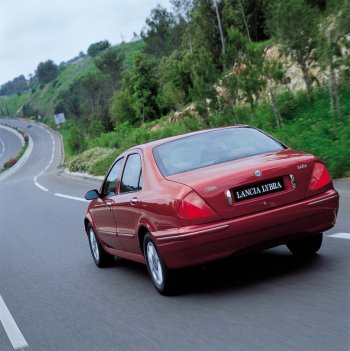 |
The executive-segment
Lancia Lybra will probably not go down in history as one of
Lancia’s all-time great models, but that is no disgrace, considering the calibre
of the models which represent that exclusive club. Instead, looking at it
within the time and the difficult context in which it was conceived, a more
fitting epitaph for the Lybra would seem to be that it deserves to be remembered
by as a far better car than it was generally given
the credit for during its life.
|
|
|
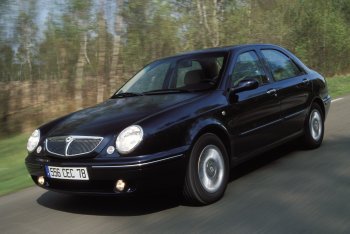
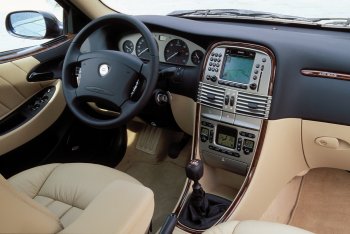 |
In June 2001, the
Lancia Lybra range was extended with the addition of the ‘Executive’ flagship model. This
added heated seats, rain sensor,
electrically-retracting door mirrors, tinted
windows, larger alloy wheels and steering wheel
controls for the stereo to the car's
existing equipment list. |
|
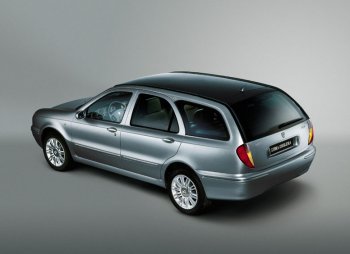 |
In a change aimed at bringing the
Lybra range into line with the
Thesis and Phedra, a highly-specified ‘Emblema’ variant was introduced at the
Bologna Auto Show in December 2001. |
|
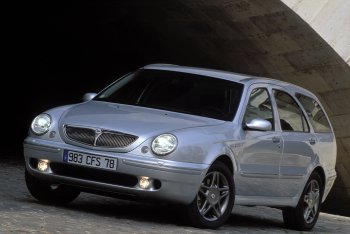
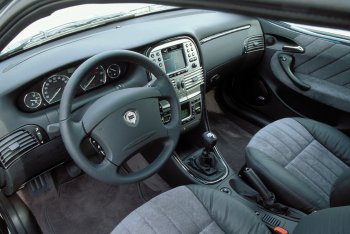
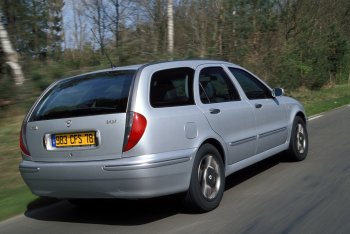 |
Introduced in
2002, the Lybra Eleganza model was externally differentiated by
certain parts painted in grey metalluro (including the door mouldings and
handles, bumpers, and 16-inch alloy wheels with 205/55 tyres), while the
interior featured perforated Alcantara trim on the doors and
seats. |
|
|
Although sales figures
were good for the first year of the car going on sale, they rapidly deteriorated
as the sheer weight of competition and constant updates in the compact executive
market started to weigh against the Lybra and the lack of development attention
paid to it. Indeed, in the context of the new Croma serving as an indirect
replacement, it is ironic that the Lybra was originally scheduled to be replaced
by a Lancia version of this car, only for the project to be cancelled due to
lack of funds. The Lybra may not have had the drop-dead gorgeous looks of the
156 or won Car of the Year, which has led to it being at least slightly
overshadowed by the Alfa – but one tends to get the impression that this is due
to an underrating of the Lybra’s capabilities rather than any significant flaws
with the car itself. The Lybra will probably not go down in history as one of
Lancia’s all-time great models, but that is no disgrace, considering the calibre
of the models which represent that exclusive club. Instead, looking at it
within the time and the difficult context in which it was conceived, a more
fitting epitaph for the Lybra would seem to be that it deserves to be remembered
by history as a far better car than it was generally given credit for during its
life. by
Shant Fabricatorian Page
2/2 |
|
![]()
![]()